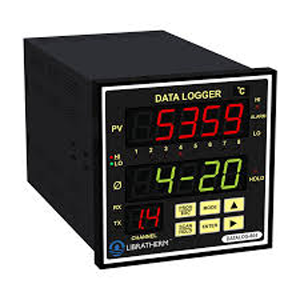The process of recording temperature required mechanical or manual labour. Temperature data loggers have become increasingly popular with the advancement of technology over the past few years. Temperature Data Loggers record temperature data over a long time interval. We can retrieve and analyze this data for tracking shipments and environmental mishaps over time. Temperature data logging has prevented several disasters around the globe in the past decade.
How Do We Construct Temperature Data Loggers?
A temperature data logger comprises a thermistor, GPS, sensor, microprocessor, built-in display, etc. These sensors can record relative humidity, sunlight, and water conditions. We connect these data loggers to external sources such as computers, smartphones, or tablets. The meteorological departments analyze the data, and then they determine what actions to take. We can retrieve the data both wirelessly and via cables. The data usually arrives in a PDF format.
Back then, these Data loggers provided reports in a spreadsheet format. We accessed these only using specific software. Users need to learn it before using it. This would take weeks and months. But modern temperature loggers simplify this process with the PDF format. These PDF files are end-to-end encrypted, which means we cannot alter the data. Temperature data logging now has auto sensors that adjust the temperature automatically. These loggers are the most accurate, as they offer a real-time update. You can also use them when creating charts for long-term analysis.
Features of Temperature Data Logger
- Small: Easy to transport
- Internal Memory
- Powered by Battery
Factors to consider
- Battery Life
- Cost
- Simplified Usage
- Accuracy
- Data Storage Capacity
- Size
- Water Resistance
- Response Time
- Shock Resistance
- Certification
- Data integration and data export
Uses of Temperature Data Loggers
Temperature Data Loggers are not something you install in your house. Governments often use it in areas where people cannot manually record temperatures. In the industrial sector, we use these products extensively. We outline the major uses below.
-
Monitoring and Tracking Shipments and Packages
We cannot transport certain products like food and medicines at any temperature. Temperature Data logging comes to the rescue. An internal temperature data logging is placed inside the package and an external temperature data logger is placed outside. This data is used to analyze the condition of the package that is to be delivered.
In the pharmaceutical industry, temperature data loggers are extensively used for pharmaceutical packages that may take months to arrive. These come in handy, as any minor fluctuation is reported to the temperature analyst and precautions are taken. Prevents further degradation of the product. If the product does not cross the tolerance temperature, the shipment is not delayed. If it crosses, then the shipment is returned or, after inspection, they change the route.
-
Monitoring Environment
We can measure areas that are prone to environmental disasters with the help of temperature data loggers. These include forests, caves, ice flows, and mines. We can record any minor fluctuation.
Distributors of temperature data logger in India
India, being a vast country, experiences temperature differences throughout the year in different parts of the country. Nowadays, several distributors supply temperature data loggers. We mention a few of the Temperature Data Loggers in Delhi, India. The price range is from 8000 to 40000 INR.
Temperature Data Loggers are one of the most vital products of the decade. It is quite useful in the industrial sector, including the food industry and pharmaceutical industries. For minor uses, we can find it in refrigeration houses and labs. Using them would prevent disasters and shipment mismanagement. Temperature data logging comes with a sensor that recognizes the temperature and humidity. The microprocessor perceives it and records it. It stores the data in internal storage. Data is retrieved from computers or smartphones through PDFs.


